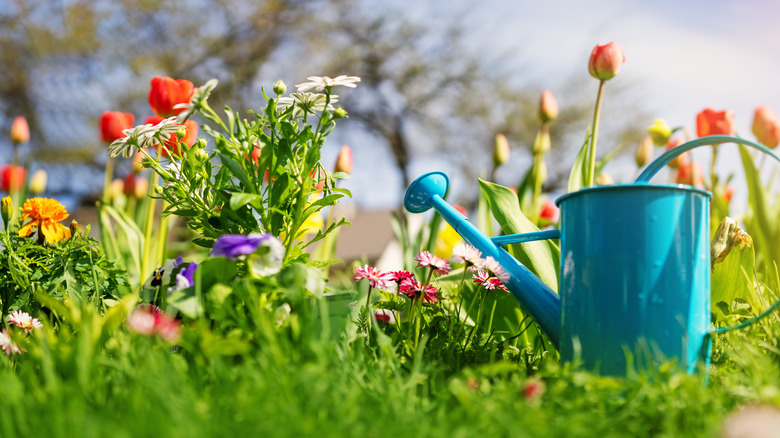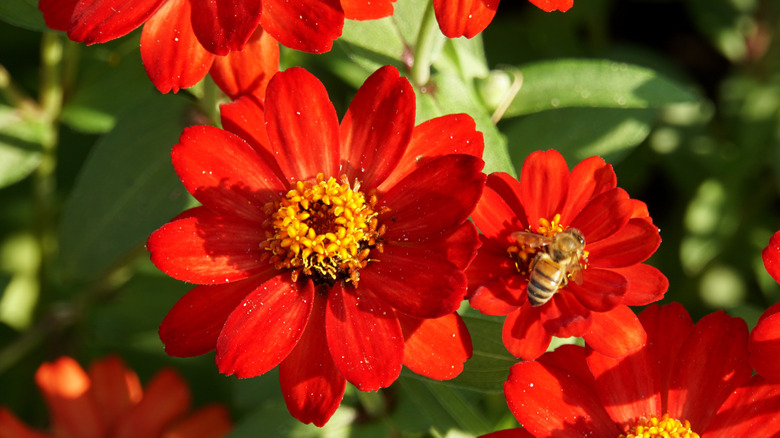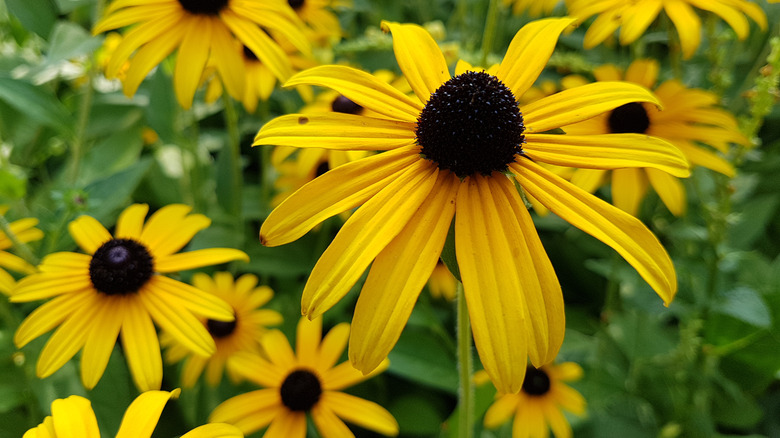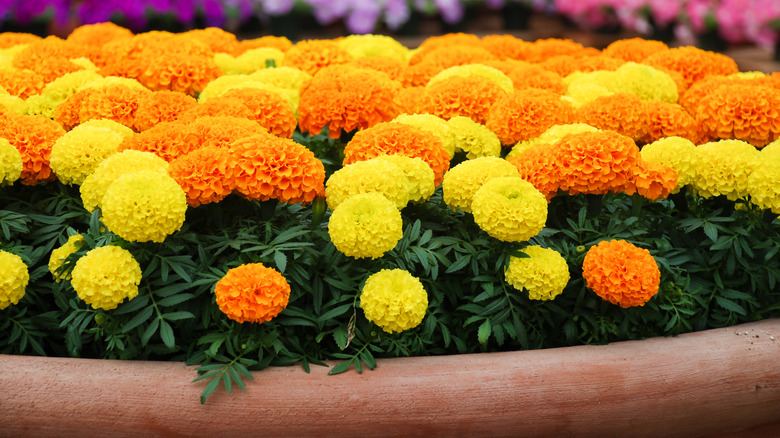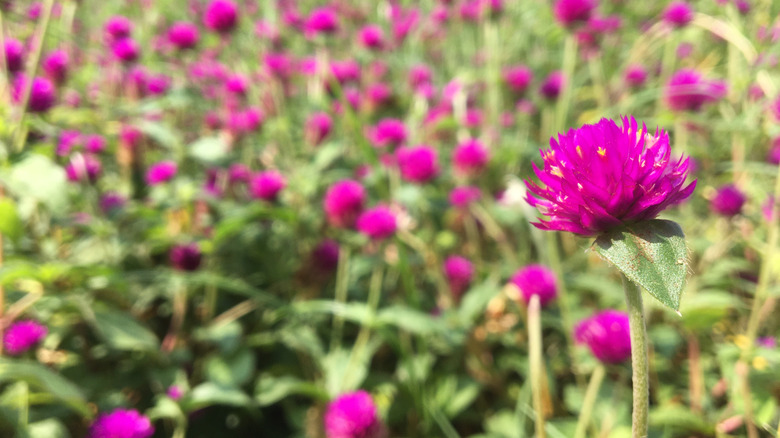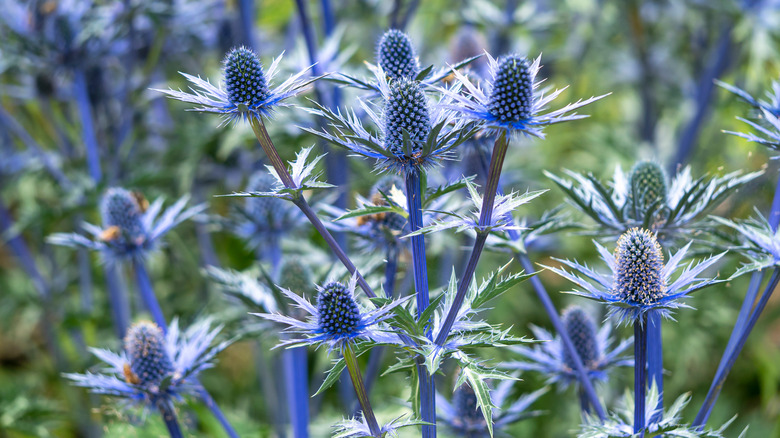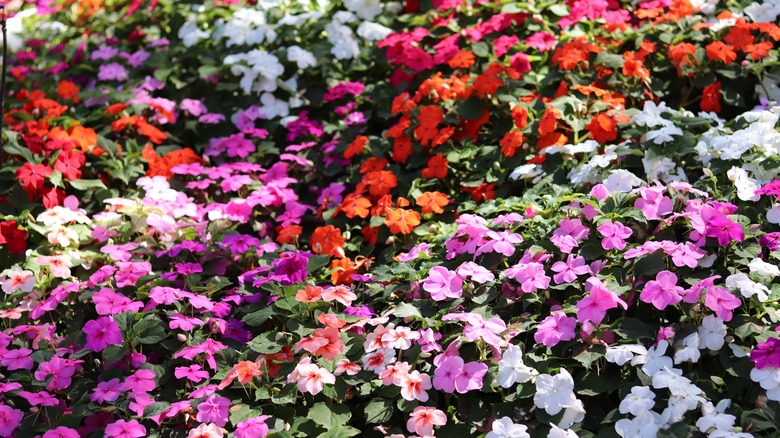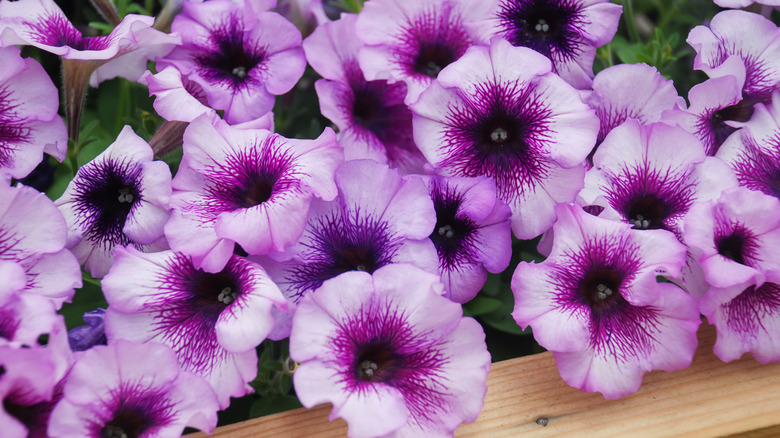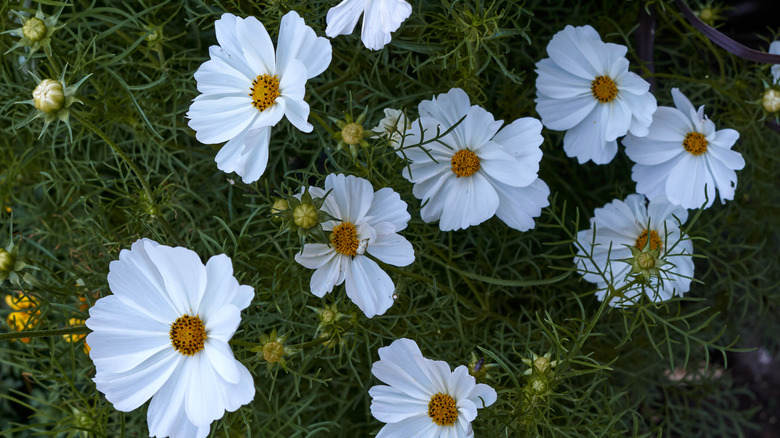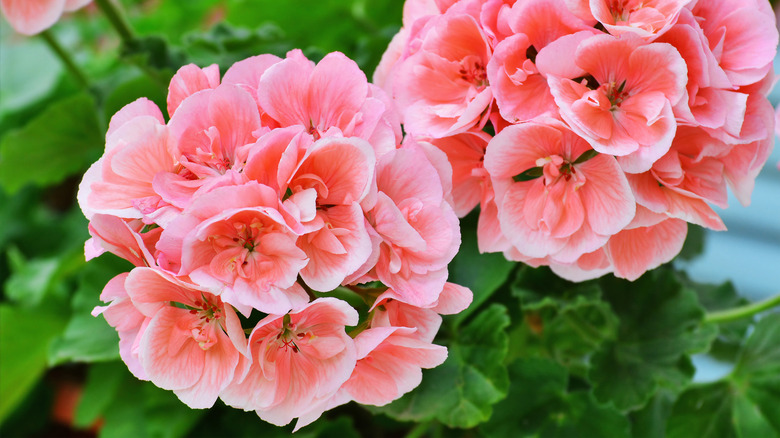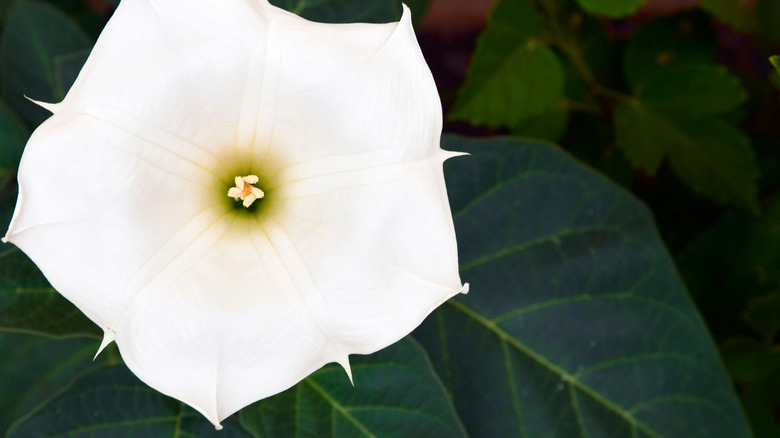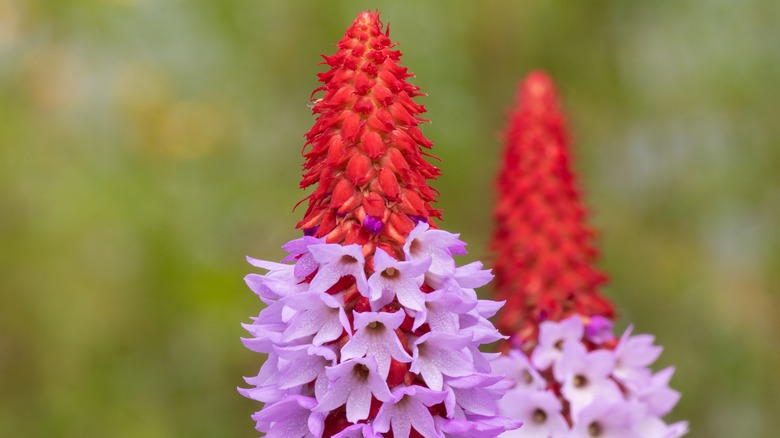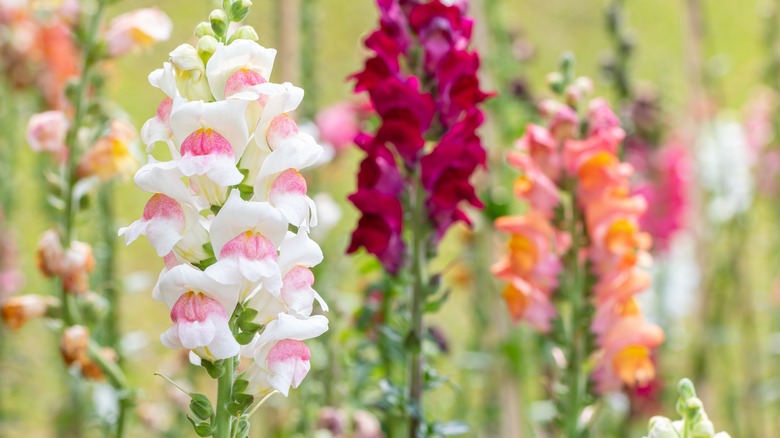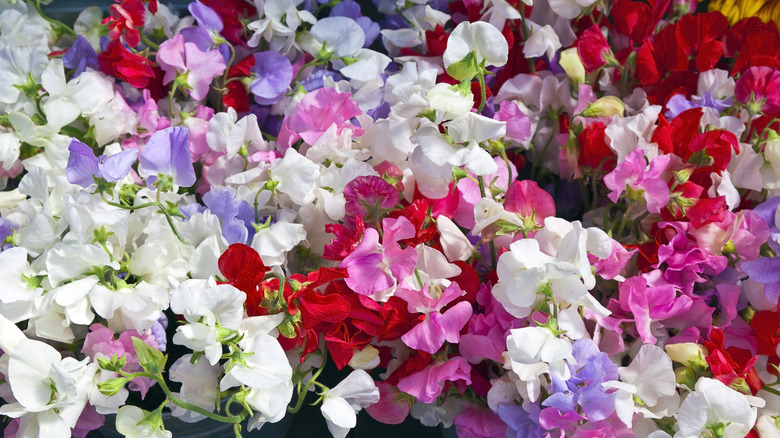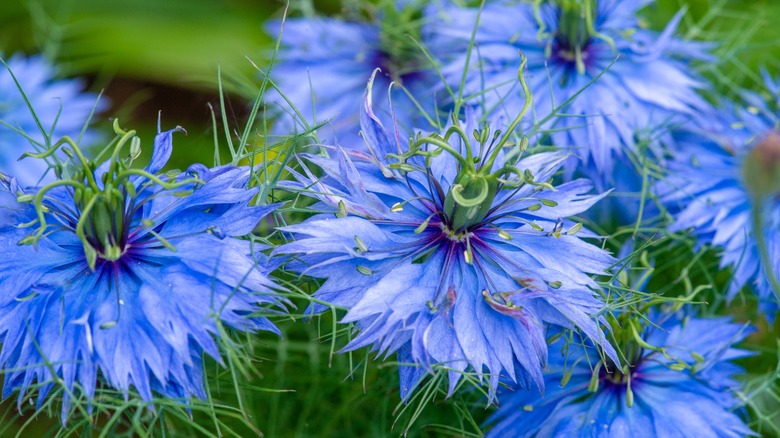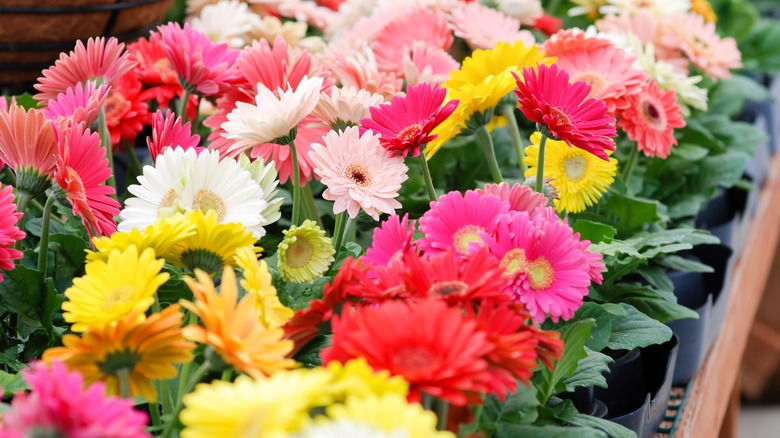15 Flowering Plants That Will Bloom All Summer Long
The best thing about summer is not the warm weather but the beautiful colors that emerge as flowers are in full bloom. Not only do we enjoy the bright and stunning contrasting colors of a well-kept garden, but also the various floral scents we pleasantly wander by, per Chappell's Florist. You're probably worrying that it's too late to plant summer flowers when summer is half over, but there are plenty of plants to choose from that quickly bloom for you to enjoy now and until the season ends, according to American Meadows.
If you want flowers that will bloom for the rest of the season or are wanting to plan for next summer, we have chosen a few great options. Wildflowers, such as alyssums, red poppies, zinnias, and cosmos, grow quickly and may be easier to plant for beginners. But there are plenty of other unique and simple options that most people will enjoy growing as a relaxing summer hobby.
1. Profusion zinnias
Profusion zinnias (z. hybrida) are great outdoor flowers as they adore being out in direct sunlight and an average amount of water. This plant is very easy to grow and blooms throughout summer, according to Mississippi State University Extension. The flowers are large and puffy, and they come in several different colors; pink, white, coral, and yellow. Fans of butterflies will also love these flowers, as they are capable of attracting many of them. This plant eventually becomes a beautiful bush of flowers that is 2 feet high and 2 feet wide.
2. Brown-eyed Susan
Brown-eyed Susans (rudbeckia triloba) are similar to daisies, except their yellow petals bend backward to create a cone-like shape, per Minnesota Wildflowers. It blooms from July to October and is able to grow anywhere from 1 to 5 feet high. In the middle of the yellow petals, there is a dark, purple-brownish center that points up at the sky. This flower is mostly seen in the midwest and upper east coast and does well in areas where there is partial shade provided.
3. Marigolds
Growing marigolds (tagetes) is like having bits of sunshine scattered around your garden, as they bloom into circular shapes of yellow and orange, per North Carolina Extension Gardener. The flowers bloom throughout the summer, and the plant is capable of growing between 1 to 4 feet tall. Marigolds are part of the sunflower family that 49 other species are part of and grow well inside or outside with direct sunlight. The soil should be able to drain well and be moist, but it is ok if it's sometimes a bit dry.
4. Globe amaranth
Globe amaranths (gomphrena globosa) create beautiful pops of color in your garden when it blooms at the beginning of the summer, per Wisconsin Horticulture. The flowers are a circular and fluffy purple color with golden tips, and they last until it begins to frost over. For beginners, this plant is fairly easy to take care of and does well in direct sunlight and dry conditions. Globe amaranths enjoy clay and sand soil and will attract butterflies and hummingbirds.
5. Sea holly
Sea holly (eryngium) blooms all throughout the summer as well as the fall. They are ornamental perennials that show off blue, unique flowers that can make any garden look phenomenal. It grows well in direct sunlight, as well as in hardiness zones 4 through 9. This is also an easy plant to grow, as it doesn't need watering unless the environment you're in is experiencing intense drought. Sea holly will look great either in a garden bed or as a border around your other flowers and are resistant to deer, according to Bluestone Perennials.
6. Busy Lizzie
Busy Lizzies (impatiens walleriana) bloom all summer until early fall and produce different colors; pink, red, orange, and white, per North Carolina State Extension. It desires bright, indirect light but also enjoys a soft shade. It does need a lot of water, and the soil should be kept moist, but the pot should be able to drip out any excess water. When it comes to fertilizer, it only needs a bit of fluid fertilizer every two weeks.
7. Petunia
Petunia (supertunia mulberry charm) produces beautiful flowers that are a perfect blend of pink and violet. They produce all summer as well as fall, according to the University of Minnesota Extension, and are capable of attracting hummingbirds to your garden, making them a beneficial pollinator. They sit well in full to partial sun and are seen in hardiness zones 2 through 11. They can grow up to 12 to 18 inches high and 18 to 24 inches wide, becoming a beautiful bush full of purple flowers.
8. Cosmos
Cosmos (cosmos bipinnatus) produce lovely flowers during the summer and fall that are 3 to 5 inches big, per Almanac. They look like daisies and come in different colors; pink, red, orange, yellow, white, and maroon. They are different from daisies as they are either in a bowl or cup shape. If you're looking for something that will add a touch of drama and height to your garden, cosmos will work as they can grow up to 6 feet tall.
9. Americana salmon
Americana salmon (zonal geranium) blooms all summer and fall, gracing you with its unique salmon-pink color, per Proven Winners. It likes direct sunlight, a regular watering schedule, and well-drained soil. This plant is capable of growing about 1 foot high, and although the flowers look delicate, they're able to endure the rain, heat, and wind. To really elevate its look, the plant also has scalloped leaves, creating a very feminine look. You will typically find this plant in heat zones 1 through 12 and hardiness zones 9 through 12.
10. Moonflower
Moonflowers (ipomoea alba) bloom from mid-summer to late fall and are considered perennials, per North Carolina State Extension. If you really want a showstopper in your garden, then please plant these flowers. Not only do they emit a sweet scent, but they produce white flowers that twist into a star shape at night and close back up; either way, they'll look gorgeous. Moonflowers are also easy to take care of and can be planted in direct sunlight, where they can really shine.
11. Vial's primrose
Vial's primrose (primula vialii) creates wonderful contrast as the flowers form into a pointed shape with dark pink tips and a violet-colored base, per Nature Hills. Their flowers bloom from June to July and can endure different kinds of sun shade; direct sunlight, partial shade, and a mixture of both. This flower is best for those who have ponds in their gardens, as it can be planted around its edge. Vial's primrose can also attract bees and butterflies but is toxic to cats, dogs, and horses.
12. Snapdragon
Snapdragon (antirrhinum majus) flowers bloom for a long time, starting in late spring, and they keep blooming till fall, per Adams Fairacre Farms. They come in a variety of pastel and bright colors, such as pink, orange, yellow, peach, purple, white, red, and bicolor. The flowers grow vertically up the stem, with more at the bottom than the top. They can be planted in garden beds, borders, hanging baskets, and more. They're also able to attract butterflies and hummingbirds while being resistant to deer.
13. Sweet pea
Sweet pea (lathyrus odoratus) blooms from late spring to fall, and the flowers pop out in a beautiful, ruffle texture in shades of pink and purple, per Missouri Botanical Garden. It's easy to take care of, attracts butterflies, and repels deer. Sweet pea flowers like being in direct sunlight, and can be planted in a garden bed or border, pergolas, wall-side borders, and more. They can grow 3 feet tall for a spectacular visual but do not like environments that are humid and hot.
14. Love-in-a-mist
Love-in-a-mist (nigella damascena) are plants that produce soft blue flowers all summer if you plant new selections of them every few weeks at planting time, per Wisconsin Horticulture. When they bloom, these flowers look as though they're from the movie "Avatar," as little, squiggly, green stems poke through the middle of the flower, giving them an alien-looking design. Although these flowers have a super unique appearance, they're pretty easy to maintain; love-in-the-mist can handle full sunlight and have average water needs. They also live in most zones; hardiness zones 2 through 11 and heat zones 1 through 12.
15. Gerbera daisy
Gerbera daisy (gerbera jamesonii) blooms from early spring to late autumn, per Clemson Cooperative Extension. This flower comes in a plethora of colors; red, yellow, orange, white, and other pastel colors. It's also known as one of the most popular flowers in the world, as it creates a beautiful display for gardeners any time of the year. However, it does look best during early summer and late fall. Not only do gerbera daisies grow all year, but they are easy to take care of; it loves full sun but would also like some shade in the afternoon, and their water needs are average.
